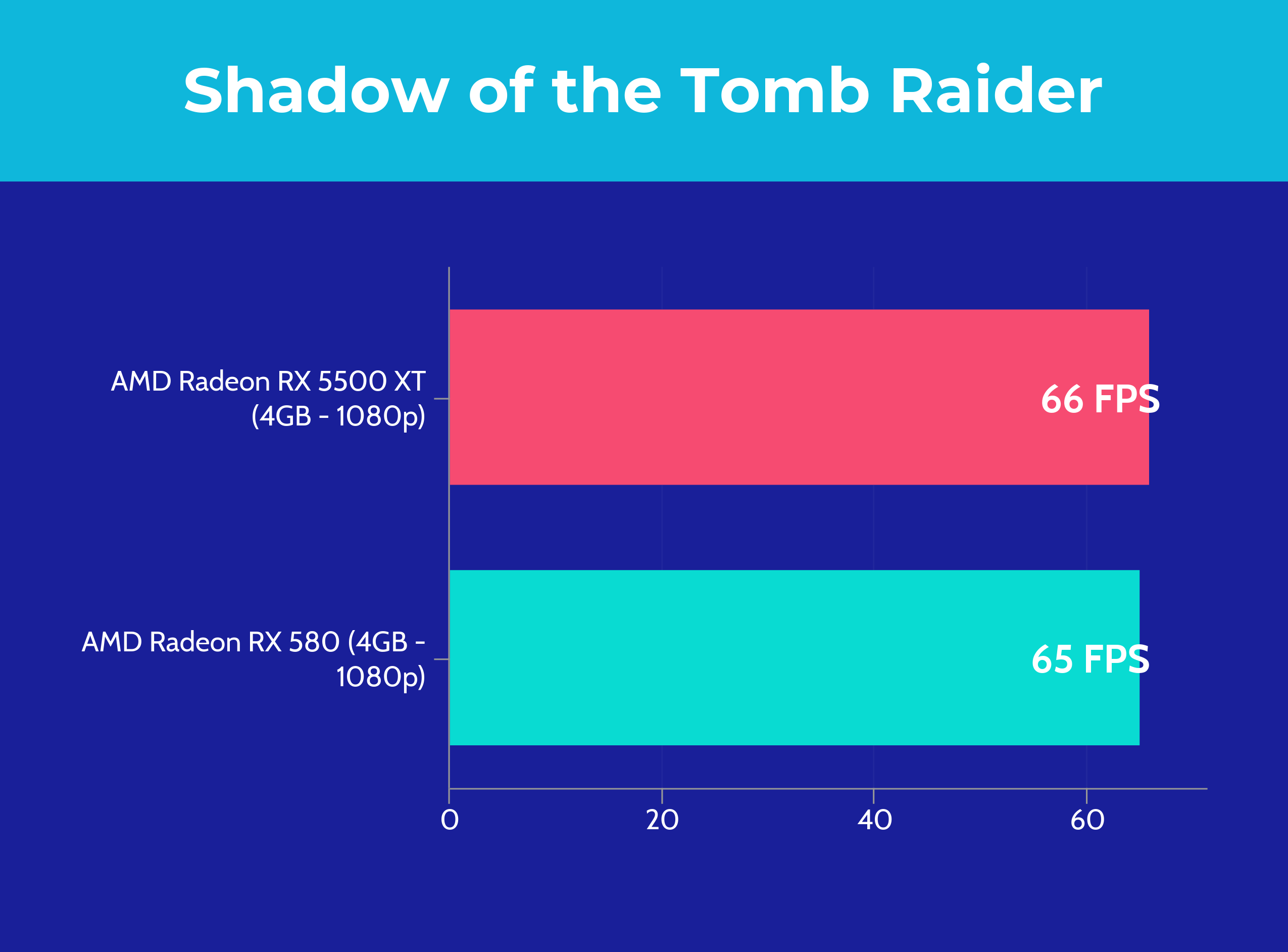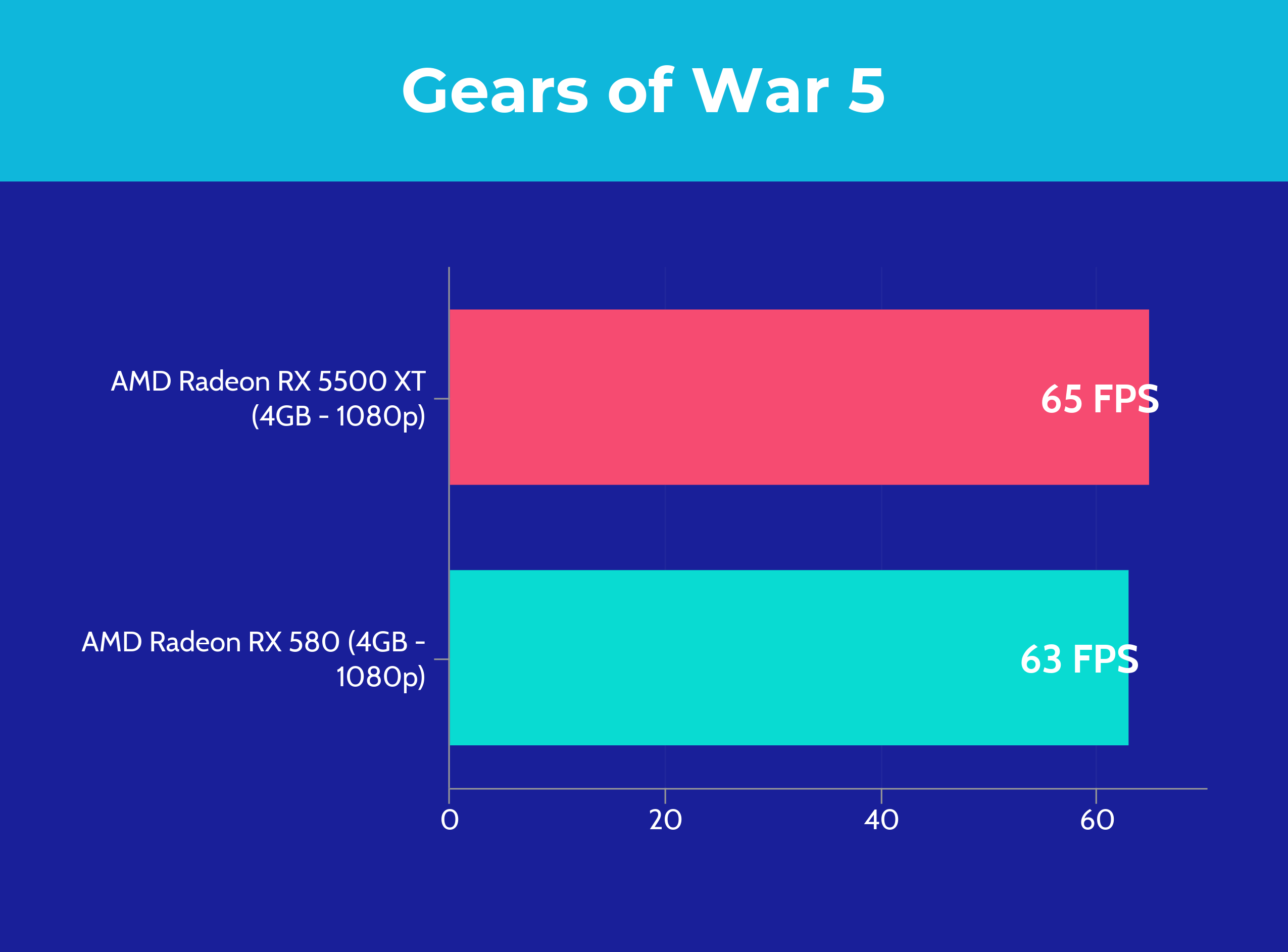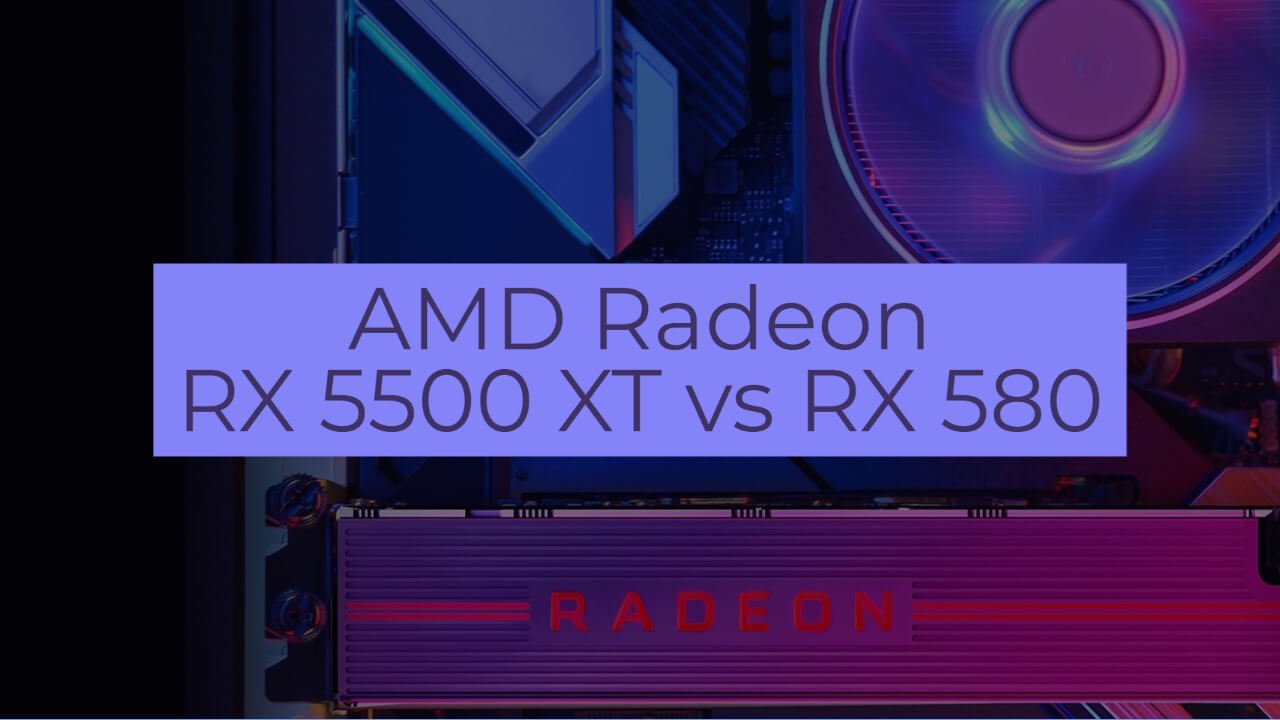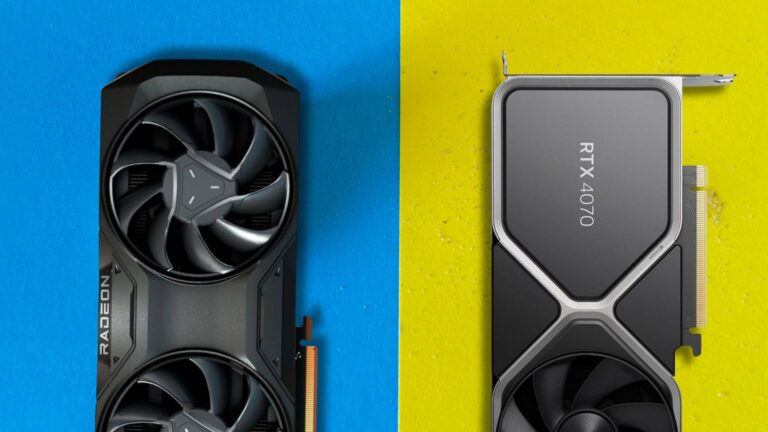 |  |
|---|---|
| AMD Radeon RX 5500 XT | AMD RX 580 |
| BUY NOW | BUY NOW |
| PROS | PROS |
| Performs in line with price. Adrenalin 2020 version of AMD’s Radeon Software is feature-rich. | Brilliant Full HD performance on PC. Impressive and stutter-free 1440p performance. The affordable price makes it a great value GPU. Comes with enhanced Polaris Chipset. |
| CONS | CONS |
| Inconsistent performance. Not much real-world result from overclocking. A little more expensive than parallel Nvidia cards. | Minor update from the previous RX 480. No power hog has been attached. No compact cards are there. |
What are the differences between RX 5500 XT and RX 580 and which should you get? I’ve compared 8 games at 1080p resolutions to help you decide.
Specification Sheet |
RX 5500 XT |
Vs |
RX 580 |
| 1,408 | Stream processors | 2,304 |
| 1,685MHz | Base clock | 1,257MHz |
| 1,717MHz | Game clock | n/a |
| 1,845MHz | Boost clock | 1,340MHz |
| 4/8GB GDDR6 | Memory | 4/8GB GDDR5 |
| 14Gbps | Memory speed | 8Gbps |
| 128-bit | Memory bus | 256-bit |
| 224GBps | Bandwidth | 256GBps |
| 130w | TDP | 185w |
| $170 | Price | $170 |

Overview |
Sapphire Pulse Radeon RX 5500 XT (8GB):
This year has been a bit of a weird one when it comes to graphics card launches. We’ve seen a lot from the Nvidia side but not very much from AMD. Of course, we’ve seen the RX 5700 and the RX 5700 XT but these are kind of aimed I guess more at 1440p gaming. What about 1080p gaming well that’s where the 5500 XT comes in.
The card has a dual-fan design and also a very large heatsink which spans the entire length of the card which also features three heat pipes. The backplate is very nice-looking. It’s gonna look great inside your system.
This card would be available in 4GB and 8GB VRAM versions. One thing that I particularly like about this card is that has got a very beefy cooling at the back you get 3 DisplayPort 1.4b ports and one HDMI 2.0 port.
I felt that the brilliant design is solid like almost every other Sapphire Pulse card. It has a single eight-pin PCIe connector and has a total power draw of 225-watts. The only real standout feature on this card is the bio switch button which does mean you can switch between quiet and performance modes which will basically lower the clock rate and also change the fan curve.
The overall dimensions of this card are also big enough and it’s ATX form-factor card. The back is pretty good and it’s reinforced. This card has PCI Express for support for twice the bandwidth of PCI Express 3. It comes with 1.408 stream processors and apart from that has a 14,000 megahertz memory clock based on 7-nanometer process has 8GB GDDR6, 128-bit memory interface, the memory bandwidth is 224 Gbps and it comes to the base clock of 1685 megahertz which is higher than the normal base clock for the OEM card and the boost clock goes up to 1845 megahertz.
Gigabyte Radeon RX 580 (8GB):
On the front, there’s this rubber texture covering the whole thing and an air intake fan towards the end. It’s a blower-style cooler, so the air is all pushed out through the rear.
The backside, the whole board is exposed with no backplate, and toward the end, we can see that the fan sort of hangs off over the edge of the card, making it longer for presumably more cooling space.
On the rear of the card, we can see that it takes up two PCIe slots, and features one HDMI port and three DisplayPort 1.4 outputs. There’s also some exhaust vents for the outgoing air.
It’s got 2,304 stream processors, 8GB of GDDR5 memory, a base clock speed of 1,257MHz and a boost speed of 1,340MHz. While overclocking I was only really able to get it stable at 1,350Mhz which wasn’t much higher than what it was boosting too. AMD recommends a 500-watt power supply, and note that the card will typically draw around 185 watts.

Game Performance |
AMD Radeon RX 5500 XT vs RX 580:
The graphics I used – Sapphire Pulse Radeon RX 5500 XT 8GB and Gigabyte Radeon RX 580 Gaming 8GB.
I have tested 8 games at 1080p. I was not able to do it at 1440p. So the results at 1440p would be different. Both graphics cards have the same VRAM of 8GB.
The system that I’m testing in has an Intel Core i7-8700K. I’m using the best CPU that I can for gaming in order to reduce it being a limiting factor in the benchmarks. The system also has 16GB of DDR4 memory running at 2,666MHz and is running Windows 10 with all updates to date applied. Now let’s take a look at the benchmark results.
1. Star Wars Jedi Fallen Order

In this test, the RX 5500 XT card was ahead in average FPS at 1080p. The results were extremely close together and within the margin of the error range.
2. Battlefield V

Battlefield V was tested in campaign mode with a built-in benchmark tool. I was playing the game in Ultra settings. The results were almost the same. There was only 1FPS difference. Yes, RX580 was ahead than RX 5500 XT.
3. Assassin’s Creed Odyssey

I was playing this game at Very high settings. And I tested this game with a built-in benchmark tool. The RX 5500 XT was 10FPS ahead of the RX 580.
4. Shadow of the Tomb Raider

Shadow of the Tomb Raider was tested with the games benchmark tool and was another test that heavily favored the RX 5500 XT. The average FPS on the RX 5500 XT was 1% higher than the RX 580.
5. Gears of War 5

Gears of War 5 was tested with Ultra settings. The 1080p results were quite similar, not too much difference. As you can see the above graph, there was only 2FPS difference.
6. Far Cry New Dawn

Assassin’s Creed Odyssey was tested using the built-in benchmark, and this was another test that saw big gains from the RX 5500 XT, at least with the ultra settings. The RX 5500 XT was 10FPS ahead of the RX 580.
7. The Witcher 3

The Witcher 3 tends to be a fairly GPU heavy game, however, the difference didn’t really seem to be a factor at ultra settings, as there was no difference between in this title. So it doesn’t seem to matter which you pick here.
8. Metro Exodus

Metro Exodus was tested with the games benchmark tool. Again the results were pretty similar between the two. The RX 5500 XT was just 3FPS ahead in my results.

Which Should You Get? |
In general, AMD Radeon RX 5500 XT is 10% ahead of RX 580. They both are decent options for the money so I think it comes down to what level of game performance you need. If you can spend $30-50 more then you should go for AMD Radeon RX 5500 XT. And if you want to save some money then, of course, go for RX 580.





